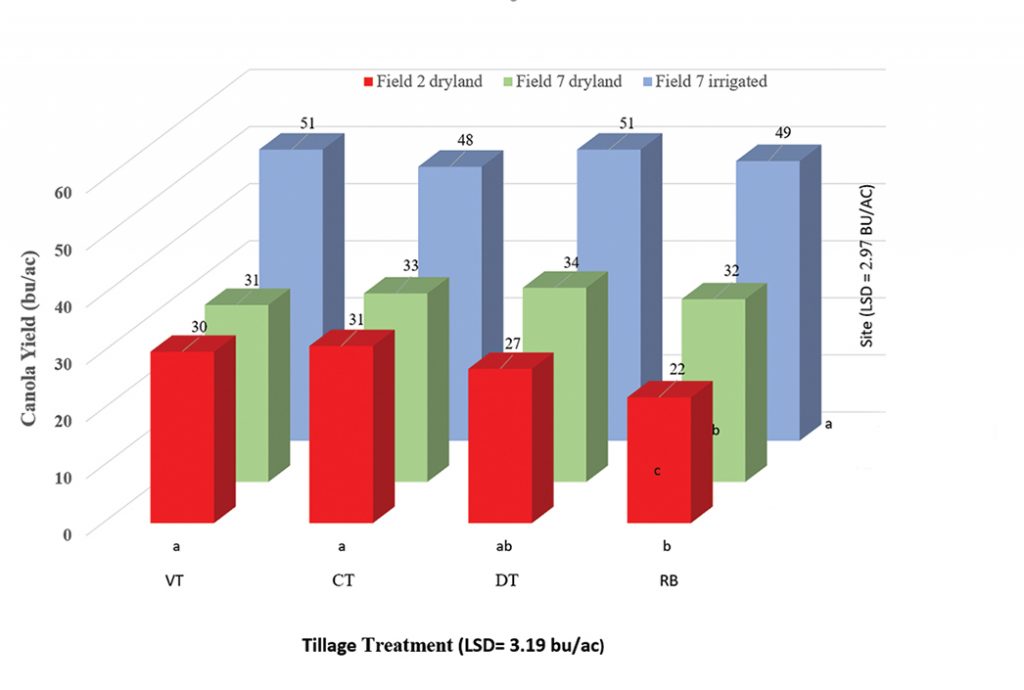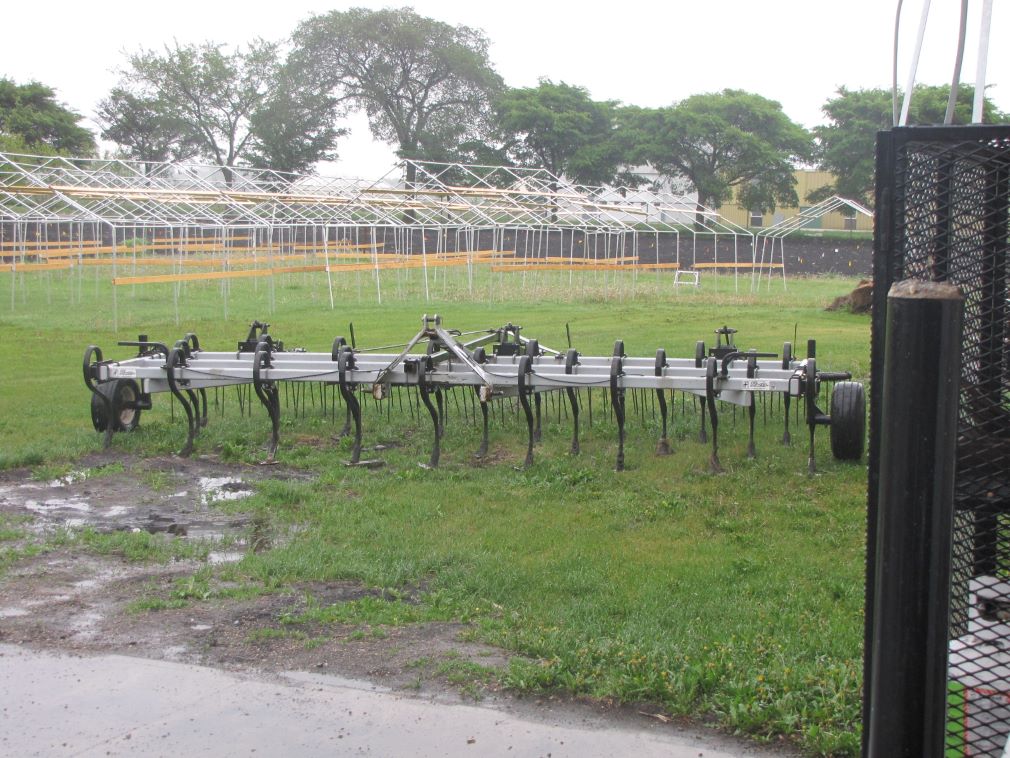Key Result
Heavy tillage can increase soil compaction, reduce soil strength and reduce canola yields, especially when carried out under higher moisture conditions and in the spring, prior to planting.
Project Summary

Effect of tillage method, plant population and soil moisture conditions on canola yield
Excessive precipitation and limited drying weather around the time of various field operations (ex. seeding, input application and harvest) can lead to growers driving heavy equipment over the soil at less favourable moisture conditions, which can result in increased soil strength (soil compaction). This can negatively impact soil health and reduce the long-term productivity of the soil.
To better quantify the impacts of compaction and determine the best management strategies to reduce negative impacts, this two-year study examined the differences in soil strength and canola stands under four tillage treatments (vertical tillage, conventional tillage, deep tillage with subsoiler and rotovator, and raised bed/controlled traffic agronomy) at varying depths and intensities in both dryland (rain-fed) and irrigated conditions.
Figure 1. Effect of tillage on canola yields by site
A significant difference in canola yields was found among sites, tillage treatments and plant populations. Vertical and conventional tillage produced significantly higher yields than the raised bed system (which had compromised the seedbed conditions). In addition, the deep tillage and raised bed methods had less soil compaction (at eight-inch soil depth) than the other two treatments with more distinct differences in the first, rather than the second year. At this depth, conventional tillage retained the most soil moisture.
Since spring tillage operations prior to planting had a negative impact on the seedbed, fall tillage operations would be preferred (if required).

Plant stand results support previous work on the relationship between stand and yield. Plots with four plants per square foot yielded significantly less than the higher plant populations (seven, 10, 13 plants per square foot), which supports the recommendations that a target plant population of five to eight plants per square foot provides the best stand for achieving agronomic and economic goals for canola production.





